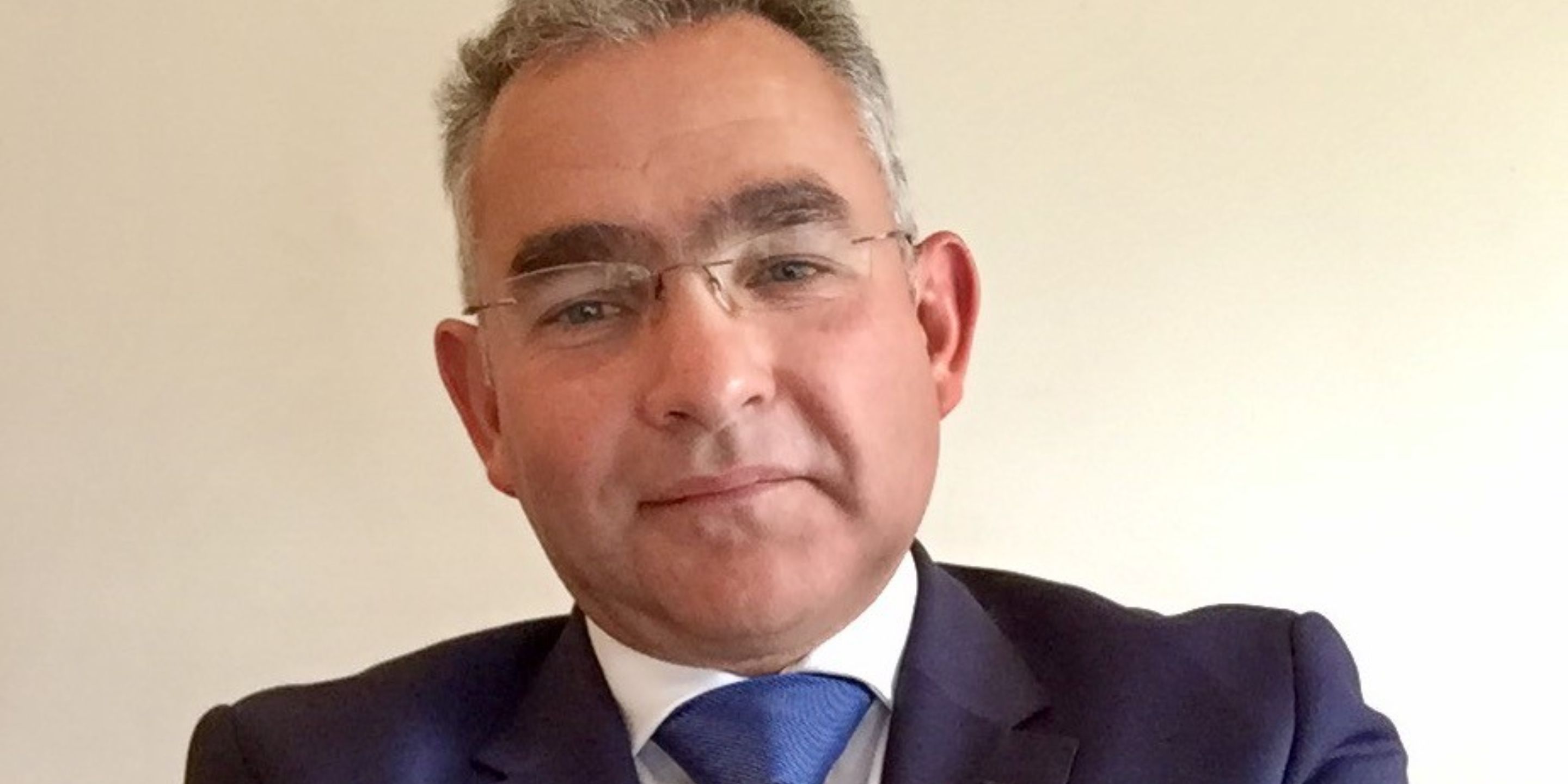HC Insider speaks to JC Immer, Commercial General Manager at Nexa Resources, and also Chairman of the LME Zinc and Lead Committee, about his 20-year career in the metals and mining sector, the trends he has witnessed, and the challenges currently facing the sector.

Four key challenges affecting the metals industry, according to technology company ABB, include the sustainability crisis, rapid digitalisation and unlocking the potentials in data, shifts in consumer demands, and the attraction of top talents. In addition to these industry-specific issues, the longer-term impact of Covid-19 on the sector remains uncertain, and ongoing disruption is likely. HC Insider speaks to JC Immer, Commercial General Manager at Nexa Resources, and also Chairman of the LME Zinc and Lead Committee, to better understand the future of the metals and mining industry.
HC Insider: What is your role at Nexa Resources?
JC Immer: I am the Commercial General Manager at Nexa Resources and I am responsible for the commercial refined metal activity outside of South America – I look after Asia, Europe, Africa, and North America. I joined the company four years ago, just as Nexa was completing its US$570m IPO. The company was at the beginning of an evolution – it is the fourth largest zinc producer in the world and was ready to take that step on to the global stage. My role was to try and help them achieve that given my background in working for major international companies. The Luxembourg office is the biggest Nexa office outside of South America, as well as the listed entity, and as the General Manager, I oversee all the functions for the team there. I am also responsible for helping to prepare the next generation of people to take the company to the next step, while promoting Nexa as an intelligent and reliable company.
HC Insider: What do you mean by, ‘prepare the next generation?’
Immer: The talent pool within the company was very impressive when I arrived and Nexa has always focused on the development of its employees. However, selling zinc in Brazil is a completely different animal to selling zinc in Vietnam or Indonesia, and so I had to help develop existing skill sets. The teams needed to understand how international commodity trading works, and the inherent risks it brings. The next generation does not necessarily mean the younger generation. For us it was imperative that we worked with senior management within the company to show the opportunities that existed, the benefits and synergies our strategy would bring to the group, as well as a robust management approach to the risks and operational requirements that come with expanding your global footprint.
HC Insider: What are some of the notable trends you have witnessed during your 20-year career?
Immer: There has been a big evolution in terms of the traditional stereotypes of trader-producer. Back in the day, it was clearer what a trader was and what a producer was. But then we started to see a change – a consolidation with some of the traders going upstream. This made them understand the mindset of a producer and that there were other factors at play aside from a pure premium. At the same time, the producers saw the big trading groups owning the assets and realised they needed to start thinking more commercially. We had a period of commercialisation, and we saw it with Anglo American and Rio Tinto. This role reversal is definitely one of the biggest trends. The other big trend for me is probably the increase in the volatility cycles. When you look at the price moves, they seem to become more aggressive. I remember back in 2004, when a former colleague of mine said copper was going to $4,200/tonne and I thought he was insane. Lo and behold, within three years we were over $8,000/tonne. The market seemed to take on a momentum of its own, which caught a lot of people by surprise. Obviously, digitisation and improved IT infrastructure is making a big change. I vividly remember sending faxes and pinning transmission receipts to the back of faxes to make sure that the release papers for a cargo had been received. Now you have online platforms for instant communication. I still think – post Covid-19 – that face-to-face communication will remain because the business is based on trust and openness. Essentially it is a relationship business.
I vividly remember sending faxes and pinning transmission receipts to the back of faxes to make sure that the release papers for a cargo had been received. Now you have online platforms for instant communication. I still think – post Covid-19 – that face-to-face communication will remain
HC Insider: What has been your experience of third-party trading books at Nexa Resources?
Immer: It’s not something the company has done before so it’s a new process for us, but an exciting one. It shows that the company is evolving and moving in a very interesting direction. When producers talk about third party trading, it does not mean the same thing for everybody. For some groups, external third-party activity can simply help manage buffers and inventories – something a group may do periodically. Whereas for others, it is a key cornerstone of their commercial strategy, giving them a far wider reach and leverage than with just their production volumes. Anglo American and Rio Tinto are much more advanced in this area. It is important that any establishment walks before it runs when it comes to third-party trading because you have to understand if it will add value and how to execute. It has been a positive experience for me, and we have been able to enhance the mindset and skill set of the organisation. I was fortunate to learn from some of the best people in the business and feel obliged to try and replicate what they did for me with my team. Seeing this positive development has been very important to me personally and for the organisation. It has also increased our understanding of the market, how it flows, and the movement of our peers, while adding greater optionality to the mix, which in a world of uncertainty has proved very important. There will be some issues we incur along the way, but this will be a part of the learning process. I think we are making a strong statement to the market and to the consumers, that we are a reliable and evolving company.
HC Insider: What do the recent price rises mean for the metals industry?
Immer: The recent price rises are different for all parties concerned. I think it provides a little relief to the miners because it has been a tough 12 months with all the uncertainty. It provides optimism for the future. However, this optimism is not yet necessarily felt by everyone, because no one knows how this pandemic will play out. It is clear that the pandemic is moving in different directions in different parts of the world, so there is still the feeling that we need to be cautious. This is why there will always be a need for the trader because they are so important to the market – they look for the uncertainty and help provide those niche transactions and services.
HC Insider: Why do you think the metals market has performed well this year?
Immer: We have certainly seen in our business that the activity in the first part of 2021 has been recovering back to a normal level with regards to long-term purchasing. An area that was conservatively contracted last year. But it is important to note that the level of stimulus also far outweighs what we saw following the financial crash of 2007-2008, as there’s some serious infrastructure projects being launched and that gives me optimism. Additionally, the markets understand more and more that mining is a difficult business and it’s getting harder, and rightfully so, because of the need for sustainable environmentally conscious practises, something paramount for Nexa. This adds to the cost and complexity, which then adds to the price environment.
HC Insider: What are your thoughts on the LME’s decision to consider closing its iconic ‘Ring’ metals trading floor?
Immer: It is amazing how much time I have had on this subject since the statement from LME was released earlier this year. I have to state straight away that I am very attached to the LME and I support its growth. Its very close to my heart and I sit as Chairman of the LME Zinc and Lead Committee. But this has been a very contentious issue, and when I first started trading on the LME, I was told that it will be closed in the next five years. And lo and behold, 20 plus years later and the Ring, Covid-19 permitting, is still open. I think a lot of people understand that the Ring will close at some point, but we are a long, long way from that because the Ring is purely designed for the metals industry and it provides a very unique structure that caters to the way fabricators, producers, and consumers hedge their price risk. This structure cannot be adequately replicated with technology at the moment. Unfortunately, as antiquated as it sounds, a bunch of people in the Ring with pads and papers is still the most effective method. In a recent committee meeting, a lot of the members commented specifically that the liquidity and transparency that the Ring provides has suffered since the pandemic. So, I do not think it is the right time to close the Ring. The LME, the way it is structured, has a unique advantage over any other exchange that offers price risk management.
HC Insider: What challenge does the LME need to address?
Immer: The LME needs to engage with the physical community more to understand how they work. I am very keen to try and leverage the physical committees – like the Zinc Committee– to try and bridge the gap. Otherwise, you risk becoming disconnected, and it is quite a delicate dance between the LME, the Members, the wider investors, and the physical community. But they need to try and somehow connect all of them because I feel the connection is a bit strained at the moment.

